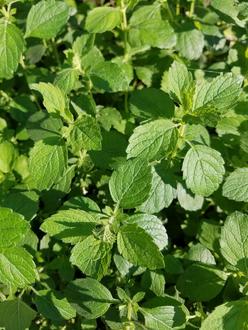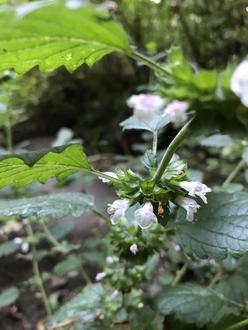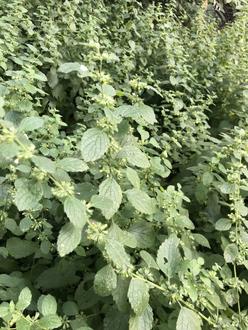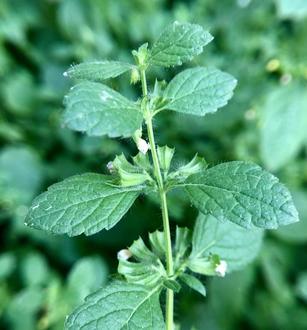Lemon Balm (Melissa officinalis L.)
Also known as common balm.
↑Summary
A common garden plant with a lemony scent, frequently reproducing by seed and established in the wild at many locations across North America.
↑Range - Expand
| Legend | Color |
| Introduced | |
| Introduced or Not Present |
This tentative map is based on our own research. It may have limited data on Canada and/or Mexico, and there is some subjectivity in our assignment of plants as introduced vs. expanded. Read more in this blog post.
Although this plant occurs somewhere in each of these regions, it may only occur in a small part of some or all of them.
↑Description & Identification
Visually similar to a number of other species in the mint family, this plant is most easily distinguished by its lemony aroma; although other plants also have a lemony aroma, the most visually-similar plants have very different smells.
↑Similar Plants
↑Habitat
Most common in or near suburban or urban areas. Found in overgrown gardens, under hedges, fencerows, and thickets, sometimes along roadsides and waste areas. In the more arid parts of its range, limited to moister sites, such as in floodplains. In the northeast, found in meadows and fields.
Prefers to grow in moist to average conditions, in fertile loamy soil.
↑Life Cycle
Lemon balm is a clumping perennial. It is short-rhizomatous, forming clumps that get slightly larger and grow more stems each year, but not usually spreading long distances.
Plants growing from seed usually do not flower in their first year.
Plants bloom from summer into early fall, and seeds are produced in fall. Seeds usually germinate in the subsequent growing season, after a cold dormancy. We were not able to find information on whether or not lemon balm forms a persistent seed bank, but seeds of plants in this family are less likely to persist long-term.
↑Uses
Widely cultivated as a garden plant, where it is valued for its lemony scent. Often used as an herbal tea. Used medicinally for anxiety and stress reduction, to promote cognitive function, and to treat mild indigestion.
↑Related Plants
This is the only species of its genus found in North America; there are three other species native to East Asia. The broader Nepetoideae tribe contains numerous plants. Within this, the most closely related genus, Neoeplingia, is not found here, but the two next-most-closely related genera are, including rosemary (Rosmarinus officinalis), which is introduced, and numerous Salvia sp., both native and introduced.
↑Links & External Resources
• Melissa officinalis (Lemon Balm) | Illinois Wildflowers (About This Site)
• Melissa officinalis (common balm) | USDA PLANTS Database (About This Site)
• Melissa officinalis | Go Botany (About This Site)
• Lemon Balm | iNaturalist (About This Site)
• Melissa officinalis (Lemon Balm) | Missouri Botanical Garden Plant Finder (About This Site)
• Lemon Balm: Uses, Benefits, and More | Healthline (About This Site)
• Melissa officinalis | Biota of North America Project (BONAP) (About This Site)
• Melissa officinalis | NatureServe Explorer (About This Site)
• Lemon Balm | Maryland Biodiversity Project (About This Site)
• Melissa officinalis L. (Lemon Balm, Common Balm) | Digital Atlas of the Virginia Flora (About This Site)










